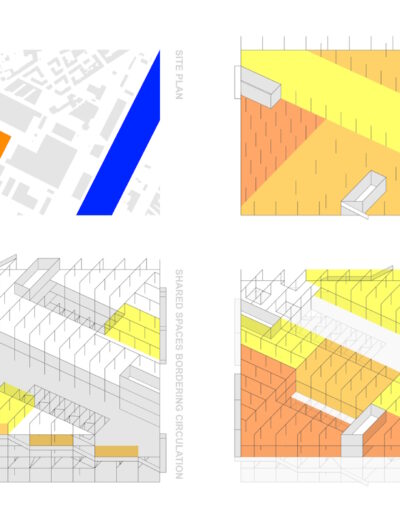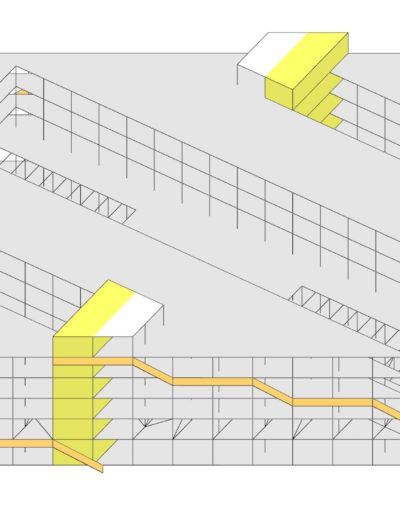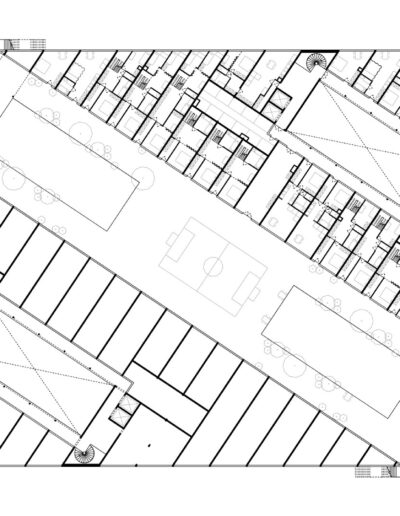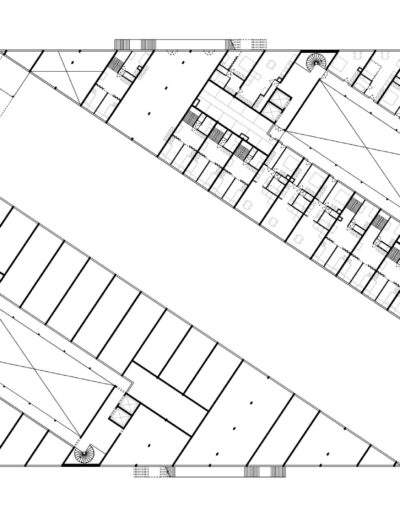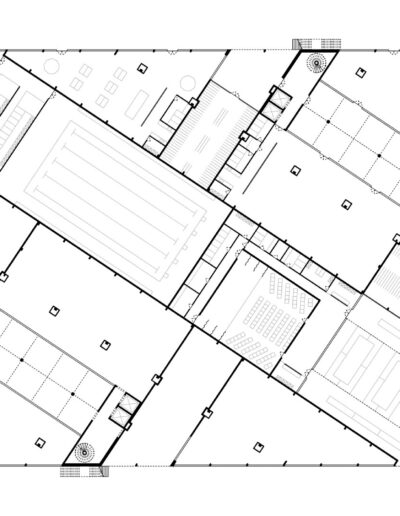Villa CT
Arnout Cuypers
Master Architectuur
2022 — 2023
studio
Spaces of Transition
promotoren
Mario Rinke
Robbe Pacquée
CIRCULATION / fast circulation via the cores (highway) and slow circulation via spiraling stairs (street)
+2 / Living units and shared spaces organized around a large void (garden street) and two small voids (courtyards)
+4 / The shared spaces, located at the intersections of the spiral stairs with the floors, connect interior and exterior
Villa CT
The title ‘Villa CT’ represents this building’s main ambition: creating a city within the city. Because a city is the ultimate space of transition. It’s constantly changing in many ways, yet structurally it is not. What makes the city’s/Villa CT’s structure the ultimate space of transition is its spatial diversity. For each activity there is an appropriate, bespoke space. When many such restrictive spaces are combined, a transitional whole arises.
The title ‘Villa CT’ represents the most fundamental ambition of this building. That is, to create a city within the city. Why? Because a city is the ultimate space of transition. People constantly move in and out of the city, and within it, as do their homes, their workplaces and their leisure spaces. Superficially the city is constantly changing, but fundamentally it is not. What about the city provides these possibilities for change? Richard Sennett offers some insights in his analysis Building and dwelling. Ethics for the city. But another, unexpected source of answers is MVRDV’s seminal project Villa VPRO. Designed to facilitate the VPRO’s city-like internal workings and organizational structure, its analysis both reveals certain mechanisms of the city while at the same time showing how they can be applied on the level of the building. Villa CT aims to synthesize the findings from aforementioned analyses, thus creating a city within a city.
On the most abstract level, what makes a city / Villa CT the ultimate space of transition is its spatial diversity. For each activity there is an appropriate space. That one space itself is not a transitional space. Quite the opposite: it is so appropriate because it clearly limits what is possible inside of it. When many of these spaces, all having their own (im)possibilities, are combined, a larger transitional space arises.

